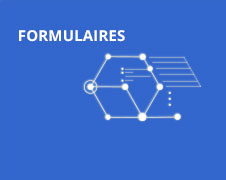Björn Benneke
Exoplanets and atmospheric models, spectroscopy in the infrared domain
- Professeur associé
-
Faculté des arts et des sciences - Département de physique
Complexe des sciences, room B-3007
Profile
Research expertise
The next five years present a truly unique opportunity in the history of planetary astrophysics. For the first time, the observational techniques, the theoretical models, and a sufficient number of known exoplanets orbiting nearby stars are available to spectroscopically characterize a wide diversity of planets. Planets ranging from blazingly hot giant planets to temperate Earth-sized planets in the habitable zone of their host stars.
Many unanswered questions remain: How and where do planets form? What materials make up their interiors? What gases are in their atmospheres? What role do clouds and hazes play? How big can a terrestrial planet be? How small can a gaseous planet be? And finally, what planets are capable of hosting life?
Professor Benneke’s team is currently in an exceptional position to address many of the questions above because they are currently conducting several unprecedented large observational programs using the Hubble Space Telescope, the Spitzer Space Telescope, and the 10-meter Keck observatories. They have developed powerful analysis and modeling framework to interpret these unique data sets. The main areas that Professor Benneke’s group is working on are:
- Exploring the diversity of planetary atmospheres on super-Earths and exo-Neptunes using Hubble Space Telescope transit spectroscopy. Professor Benneke is the principal investigator of the largest Hubble Space Program in the world to characterize small exoplanets.
- Probing the formation of giant planets using high-resolution near-infrared spectroscopy from 10-meter Keck telescopes
- Atmospheric characterization and mapping of exoplanets using the upcoming James Webb Space Telescope (JWST)
- Understanding the exotic cloud types on exoplanets
- Discovery and initial characterization of prime targets for future JWST characterization using K2, TESS, and ground-based follow-up
Biography
Professor Benneke is arriving at Université de Montréal from Caltech where he completed a 4-year postdoctoral fellowship focused on exoplanet observation and modeling. He previously received his PhD at MIT supervised by Sara Seager.
Affiliations and responsabilities
Research affiliations
Teaching and supervision
Student supervision
Theses and dissertation supervision (Papyrus Institutional Repository)
Caractérisation d’atmosphères de géantes gazeuses par la spectroscopie à haute résolution spectrale
Cycle : Master's
Grade : M. Sc.
Sonder la nature et l’origine des exoplanètes sous-Neptuniennes
Cycle : Doctoral
Grade : Ph. D.
Transmission, émission et réflexion : dévoiler les processus physiques et chimiques des atmosphères exoplanétaires avec le JWST
Cycle : Doctoral
Grade : Ph. D.
Caractérisation des atmosphères d'exoplanètes dans le contexte de leur formation et évolution
Cycle : Doctoral
Grade : Ph. D.
Probing the elemental composition of gas giant exoplanets in the context of their formation and evolution
Cycle : Doctoral
Grade : Ph. D.
Cartographie moléculaire d'exoplanètes avec le télescope spatial James Webb
Cycle : Master's
Grade : M. Sc.
Towards understanding the nature and diversity of small planets in the universe : discovery and initial characterization of Wolf 503 b and LP 791-18 d
Cycle : Master's
Grade : M. Sc.
Reflected Light of Exoplanets : a case study of WASP-43b using the Hubble Space Telescope
Cycle : Master's
Grade : M. Sc.
Transmission spectroscopy of TRAPPIST-1d with the new Palomar/WIRC+Spec instrument : a Karhunen-Loève transform based approach to extracting spectrophotometry
Cycle : Master's
Grade : M. Sc.
Projects
Research projects
Explorer le désert : caractérisation thermique d’un noyau planétaire exposé » (Exploring the desert: Thermal characterization of an exposed planetary core)
Émission thermique des exo-Terres froides, potentiellement volcaniquement actives (Thermal emission of cool, potentially volcanically active exo-Earths)
JWST GO 4098 Explorer l'existence et la diversité des planètes océans riches en substances volatiles
Planète de type sous-Neptune riche en hydrogène ou manteau de Neptune exposé: Confirmation de la nature de sous-Neptune le plus favorable pour la spectroscopie d'émission avec JWST - 23JWGO2A04
Centre de recherche en astrophysique du Québec - CRAQ
Replacement and upgrade of the Optical and Infrared Cameras for Observatoire du MontMégantic
NIRISS Guaranteed Time Observations (GTO) program on exoplanets characterization
Atmospheric reconnaissance of the TRAPPIST-1 planets
VROOMM: A High-Resolution Optical Echelle Spectrograph for the Observatoire du MontMégantic
Revealing the Nature, Diversity and Formation of Super-Earth Exoplanets
Diamonds are Forever: Probing the Carbon Budget and Formation History of the Ultra-Puffy hot Jupiter WASP-127b
The Transiting Exoplanet Community Early Release Science Program
Technologies foe Exo-Planetary Science (TEPS)
Caractérisation d'atmosphères d'exoplanètes par spectroscopie de transit avec le télescope spatial James Webb
Supplément COVID-19 CRSNG_Revealing the Nature, Diversity and Formation of Super-Earth Exoplanets
Exploration de la diversité compositionnelle et la formation de Super-Terres
Outreach
Publications and presentations
Disciplines
- Physics
- Astronomy and Astrophysics
- Pure Mathematics
- Earth Science
Areas of expertise
- Fundamental aspects of astrophysics
- Fundamental astronomy
- Spectroscopy and spectrophotometry
- Atmospheres of solid surface planets
- Extrasolar planetary systems
- Infrared astronomical observations
- Origin and evolution of solid surface planets
Aide en ligne pour votre profil | Nous joindre
Le Répertoire des professeurs est propulsé par les données du ![]() SADVR et est un projet du CENR.
SADVR et est un projet du CENR.


